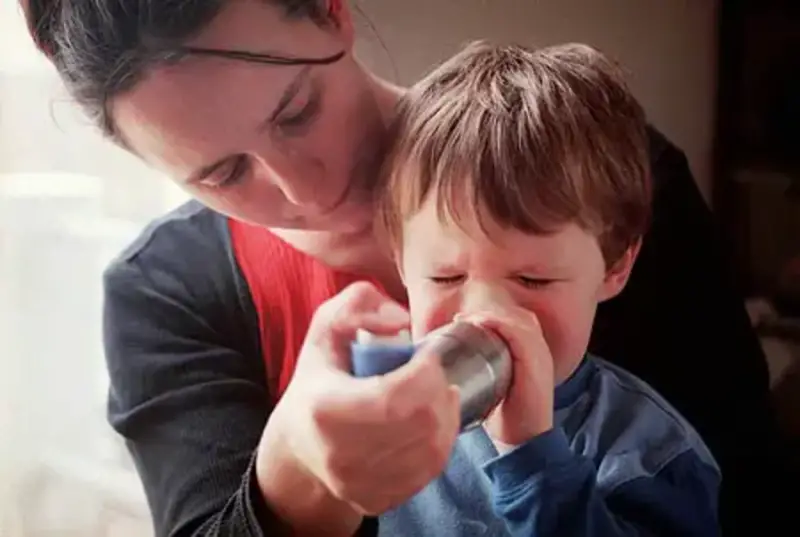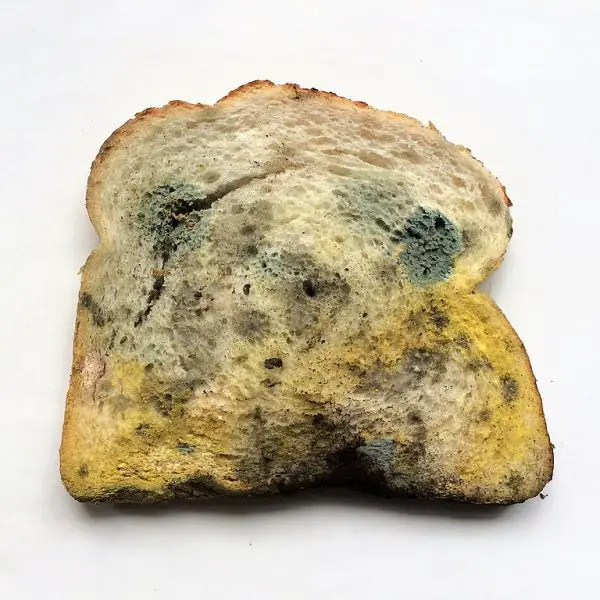
Discover the ins and outs of household mold symptoms, their impact on health, and practical ways to tackle and prevent mold growth in your home. Dive in for a comprehensive guide!
Ever walked into a room and felt a musty smell or seen those black or green patches on the walls?
Those are signs of mold, and while it might seem harmless, household mold symptoms can be a silent health hazard.
In this guide, we’ll delve deep into understanding these symptoms, why they occur, and how to keep your home mold-free.
Household Mold Symptoms
Household mold symptoms are physical reactions experienced due to exposure to mold spores in the home. These can range from respiratory issues, skin irritations, fatigue, and even cognitive disruptions.
Ever wondered why that persistent cough won’t go away or why you feel unusually tired lately?
It might be more than just a common cold or a busy week. Household mold symptoms can be sneaky, affecting our health in ways we might not immediately recognize.
In this post, we’ll uncover the mysteries of mold, its common symptoms, and how to combat its presence in our homes.
Brief Overview of Household Mold and Its Prevalence
Mold is a natural part of our environment, but when it finds its way into our homes and starts growing, it can become a problem.
These tiny fungi thrive in damp and humid conditions, often lurking in places we least expect.
From the bathroom to the basement, mold can be more prevalent than we think, especially in areas with high humidity or poor ventilation.
Importance of Understanding Mold Symptoms for Health
Recognizing household mold symptoms is crucial for our well-being.
Prolonged exposure can lead to various health issues, especially for those with respiratory conditions or allergies.
By understanding the signs, we can take timely action, ensuring a healthier living environment.
What is Mold and Mold Biotoxin Illness?
Mold is more than just an unsightly spot on your wall or ceiling.
It’s a living organism that can have significant effects on our health.
Let’s dive deeper into what mold really is and the health conditions it can trigger.
Definition and Types of Mold
Mold is a type of fungus that grows in the form of multicellular filaments called hyphae.
There are thousands of species of mold, but the most common ones found in homes include Cladosporium, Penicillium, Stachybotrys (Black Mold), and Aspergillus.
Each type has its own set of characteristics and potential health effects.
Mold Biotoxin Illness and Chronic Inflammatory Response Syndrome (CIRS)
Mold biotoxin illness, often referred to as CIRS, is a condition where individuals experience a range of symptoms due to the biotoxins produced by mold.
These biotoxins can lead to inflammation in the body, causing symptoms like fatigue, cognitive disruptions, and respiratory issues.
Chronic Inflammatory Response Syndrome (CIRS) is a progressive, multi-system, multi-symptom illness characterized by exposure to biotoxins. The ongoing inflammation can affect virtually any organ system of the body and if left untreated becomes debilitating.
Virginia Center for Health & Wellness
Common Symptoms of Mold Exposure

Mold might be tiny, but its impact on our health can be significant. From sneezing fits to chronic fatigue, let’s explore the myriad ways mold can manifest in our bodies.
Chronic Fatigue
One of the most common symptoms of mold exposure is a persistent feeling of tiredness.
It’s not just the usual end-of-the-day fatigue. It’s a deep-seated exhaustion that doesn’t go away with rest.
Persistent Cough
A continuous, dry cough can be a sign of mold exposure. The spores can irritate our respiratory system, leading to coughing fits that don’t seem to have an apparent cause.
Allergies
Mold spores can trigger allergic reactions in sensitive individuals. This can manifest as sneezing, runny nose, and itchy eyes.
Asthma
For asthma sufferers, mold can be a nightmare. The spores can exacerbate asthma symptoms, leading to more frequent and severe attacks.
Skin Issues
Mold exposure can also affect our skin, causing rashes, itchiness, and redness.
Increased Sensitivity to Chemicals
Some individuals might find themselves more sensitive to chemicals after mold exposure, experiencing reactions to products they previously had no issue with.
Muscle Cramps & Aches
Unexplained muscle aches and cramps can be another sign of mold exposure, as the toxins affect our muscular system.
Headaches
Persistent headaches, especially in a mold-infested environment, can be a clear sign of exposure.
Disorientation
Feeling constantly disoriented or having difficulty focusing? Mold biotoxins can affect our cognitive functions, leading to such symptoms.
Mental Focus
A decline in mental focus and clarity can be a direct result of mold exposure, making daily tasks challenging.
Causes and Growth Areas of Mold in Homes
Mold loves damp, dark places. But where exactly does it thrive in our homes? Let’s uncover the favorite hangout spots of these pesky fungi.
Damp, Warm, and Humid Environments
Mold spores thrive in conditions where there’s ample moisture, warmth, and humidity.
This is why areas with water leaks or poor ventilation become prime spots for mold growth.
Areas Prone to Mold Growth: Bathrooms, Basements, etc.
Bathrooms, with their constant moisture, are a mold’s paradise. Basements, especially those without proper ventilation, can also become mold hotspots.
External Factors Contributing to Mold Growth
Factors like flooding, leaky roofs, or even a simple plumbing leak can introduce excess moisture, creating an ideal environment for mold to flourish.
Mold on Food

Ever found a fuzzy green patch on your bread or cheese? That’s mold. But not all molds on food are harmful. Let’s differentiate the good from the bad.
Types of Mold That Grow on Food
Molds like Alternaria, Aspergillus, and Penicillium are commonly found on food. While some can spoil the food, others are used in food production.
Safe Molds Used in Food Manufacturing
Cheeses like brie and gorgonzola owe their unique flavors to specific molds. These molds are safe for consumption and are an integral part of the food’s character.
Treatment and Remediation
Discovering mold in your home can be unsettling. But fret not, there are ways to treat and remove it, ensuring a safe living environment.
Allergic Reactions and Treatments
For those allergic to mold, antihistamines and nasal corticosteroids can help alleviate symptoms. It’s essential to consult with a healthcare professional for a proper diagnosis and treatment plan.
Remediation Methods for Mold in Homes
Mold remediation involves cleaning and removing the mold, fixing the moisture problem, and ensuring the mold doesn’t return. This can be done using specific cleaning agents and, in severe cases, might require professional intervention.
Professional Services for Mold Removal
In cases of extensive mold growth, it’s advisable to seek professional mold removal services. They have the tools and expertise to ensure complete mold eradication.
Prevention of Mold Growth
Prevention is better than cure, especially when it comes to mold. Here are some proactive steps to keep mold at bay.
Controlling Moisture in Homes
Keeping your home dry is the first step in mold prevention.
Use dehumidifiers in areas prone to dampness, and ensure that your home has adequate ventilation.
Regularly check for water leaks and fix them promptly.
Identifying and Repairing Water Problems
Water issues, be it from a leaky roof or a faulty plumbing system, can be a major contributor to mold growth.
Regular inspections and timely repairs can nip the problem in the bud, preventing mold from getting a foothold.
Importance of Good Ventilation
Good ventilation ensures that moist air is regularly replaced with dry air.
Ensure that areas like bathrooms and kitchens, which produce a lot of moisture, are well-ventilated.
Simple habits like using exhaust fans or opening windows can make a significant difference.
Recommendations for Household Items and Structures
Choose mold-resistant products when building or renovating your home.
Use mold-resistant drywall or paint, especially in areas prone to moisture.
Regularly clean and vacuum your home to reduce mold spores.
Testing for Mold Exposure
If you suspect mold but can’t see it, mold testing can be a good way to confirm its presence and identify its type.
Mold often has a musty smell so trust your nose. If you can smell it it is there somewhere.
When and Why to Test for Mold
Testing is essential when you notice mold-like symptoms but can’t locate the source.
It’s also crucial after mold remediation to ensure all mold has been removed.
Standards and Regulations Related to Mold Testing
There are specific standards and guidelines for mold testing to ensure accuracy.
Always choose a reputable testing service that adheres to these standards.
Household Mold FAQs
Wondering about some common mold-related queries? Let’s address them.
Q. Is black mold more dangerous than other molds?
A. Black mold, or Stachybotrys chartarum, often gets a bad reputation. While it can produce mycotoxins that are harmful to health, it’s essential to note that all molds in large amounts can be harmful. It’s always best to treat any mold with caution.
Q. How can I identify mold in my home?
A. Mold can be identified by its musty smell and visible growth on walls, ceilings, or other surfaces. However, sometimes mold grows in hidden areas, making it harder to detect. In such cases, mold testing can be beneficial.
Q. Are there safe molds?
A. Yes, some molds are used in food production, like those in certain cheeses and fermented products. However, it’s essential to differentiate between intentional and unintentional mold growth.
Q. How often should I check my home for mold?
A. Regularly inspect areas prone to moisture, like bathrooms and basements. It’s a good practice to do a thorough check at least once a year or after any water-related incidents.
Q. Can mold exposure lead to long-term health issues?
A. Prolonged exposure to mold can lead to chronic health issues, especially in individuals with respiratory conditions, allergies, or weakened immune systems.
Household Mold Symptoms Conclusion
Mold might be a tiny organism, but its impact on our health and homes can be significant. By being informed and proactive, we can ensure a safe and mold-free living environment.
Reiteration of the Importance of Awareness and Prevention
Awareness is the first step towards a mold-free home. By understanding the causes, symptoms, and treatments, we can take timely action and prevent potential health hazards.
Call to Action for Regular Home Checks and Professional Consultations
Don’t wait for mold to become a visible problem. Regular home checks, combined with professional consultations when needed, can ensure that your living space remains healthy and mold-free.
If you are specifically interested in black mold symptoms you can read about them in Black Mold Symptoms In Humans.
Household mold symptoms can be caused by several common types of mold in homes.
Most of the following types of mold are far more common than black mold and prolonged exposure will create health problems.
More info here: https://www.cdc.gov/mold/faqs.htm

